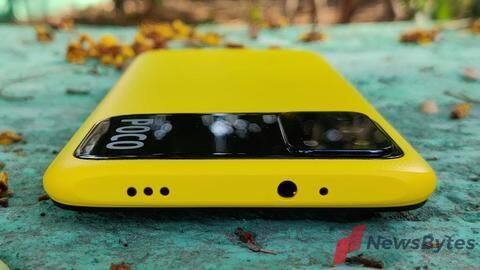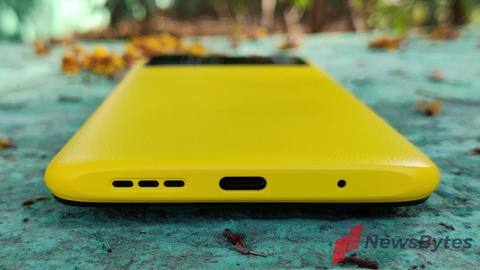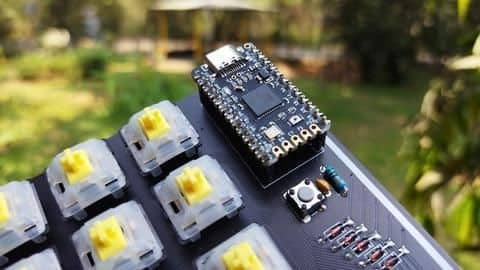POCO M3 Review: Should you buy it?
Very few can beat Xiaomi when it comes to offering impressive features and hardware at razor thin margins in the budget segment. But stiff competition from Realme, which offers ad-free experience, has prompted Xiaomi to deliver a similar cleaner experience through its POCO sub-brand. The POCO M3 is a good example of this strategy since it packs the best specifications available in this segment to potentially give Realme a run for its money. Let's find out if the POCO M3 succeeds in this quest.
Design and Build Quality: Plastic, but solid
The POCO M3 gets top marks for its bold design that stands out in the Yellow variant. While you have subtler Blue and Black options, those don't benefit from the striking contrast of the black glass cut-out harboring the triple camera setup. The unibody polycarbonate construction feels sturdy due to the 200-gram heft added by the 6,000mAh battery. However, closer inspection of the body reveals tell-tale weld lines from the injection molding process. This is nothing out of the ordinary in this price segment, but still pales in comparison to exceptions such as Realme C25, which are CNC machined. The textured surface, however, provides plenty of grip. The button placement and quality are on point, but the embedded fingerprint sensor on the recessed power button is slow and imprecise, so I relied on the faster face recognition feature instead. But thankfully the POCO M3 gets everything else right with staples such as USB Type-C charging port, top-oriented headphone jack, dual-mic support for ambient noise suppression, and a dedicated microSD card slot in addition to dual-SIM support. The screen-to-body ratio of phones in this segment has been impressive of late and the M3 doesn't disappoint while clocking in at 83.4 percent thanks to a teardrop notch and minimal chin. It also incorporates Gorilla Glass 3 substrate, which is rare for budget phones.
Display: Full HD+ with WideVine L1 support
The POCO M3's 6.53-inch ultrawide Full HD+ panel is a rarity at this price-point, with the higher resolution endowing it with perceptibly improved sharpness. This is the same display as the one on the Redmi 9 Power, so it also inherits the same outdoor legibility issues associated with reduced maximum brightness. The viewing angles are also pretty average for an IPS LCD panel, with contrast shifts manifesting when the screen is off centered. Fortunately, the actual display quality is surprisingly good at this price. The white point is fairly accurate and colors are well saturated. The display even comes with WideVine L1 support, so you can stream HD content on DRM-addled OTT services such as Netflix out of the box.
Performance: Excellent in gaming, but hobbled by unoptimized UI
The unit we have for testing is the 64GB base model with 6GB of RAM and Qualcomm's Snapdragon 662 SoC. The storage is of the faster UFS 2.1 type, which is bumped up to UFS 2.2 on the 128GB version. Although the performance of Qualcomm and MediaTek chipsets in this segment are virtually identical, software optimization makes a larger difference. That is sadly lacking in the POCO M3. As a consequence, the phone displays a bit of stutter and dropped frames, when navigating the UI and displaying heavy web pages, as opposed to the Realme C25. However, things change for the better once you leave the confines of the MIUI and fire up the game. The Adreno 610 GPU performs fairly well in titles such as Real Racing 3 and Genshin Impact. The phone also managed frame rates in the high 40s in Call of Duty Mobile running on the "High" preset. The phone did feel pretty warm despite the plastic construction after half an hour of gaming, with the battery dropping nearly 10 percent in that time. If you can get past the stutter in the UI, the phone is pretty decent at gaming and the 6GB RAM also makes multitasking snappy. Call quality was great on the dual-VoLTE networks, with the dual-mic configuration doing a great job of cutting out ambient noise.
Camera: Above average in the segment
The POCO M3 sports the standard triple-camera setup, but tiny margins ensure that adding a larger battery entails losing a feature somewhere else. Like the Realme C25, the POCO M3 also omits the ultrawide camera to fit the bigger battery in the budget. That still leaves us with a 48-megapixel primary camera and 2-megapixel macro sensor, in addition to another 2-megapixel depth sensor. Up front, you also have an 8-megapixel selfie camera. The camera app has neat AI features that work well at identifying scenes and applying appropriate tweaks. The UI, however, could use improvement as putting the macro lens under a sub-menu is counter-intuitive. Not that you would use the macro lens much as the autofocus is all over the place. The autofocus woes extend to the 48-megapixel primary camera for close-ups, but you at least have the Pro mode there which allows manual focus control. Regular photos, however, come out fairly well in daylight, with decent sharpness and color fidelity. But like all phones in this segment, the dynamic range is limited, so you have to rely on HDR to extract shadows detail. While lowlight conditions do induce noise, the quality is above average. The night mode, although not perfect, is still a viable option when shooting in darker environs. The edge detection and noise characteristics are significantly improved in this mode. The video quality at 1080p is decent for the price, but the lack of stabilization is a liability. Slow-motion recording at 120fps is cool, but don't expect to be wowed by the quality. The 8-megapixel selfie camera is sharp in daylight, but the colors are exaggerated. The image goes soft and noisy in low light conditions. Speaking of exaggerated colors, the Pro Color mode is designed to make your photographs pop, but it ends up making the image look cartoon-ish. All things considered; this is still one of the better cameras for the price.
Battery and Software: Great battery, unoptimized UI
The POCO M3 ships with a larger 6,000mAh battery that is good enough for two whole days of usage even in a dual-SIM configuration. And sure enough, it clocked in excess of 20 hours in our battery test, with the 18-watt charger replenishing the battery well under three hours. The battery does add a lot of heft to the plastic phone, but it is well worth the trouble for the target demographic that puts function over form. Unlike Xioami's Redmi branded phones, the POCO sub-brand is known for not hobbling phones with UI advertisements. I found no evidence of such UI ads during the course of the review, but keep checking forums to verify if the same hasn't been patched in at a later date. However, that doesn't mean MIUI is completely devoid of bloatware. Xiaomi's gotta eat, and you will find a number of unsolicited apps at first boot, most of which can be uninstalled. As explained earlier, the UI has some stutter and needs a bit more optimization because the hardware isn't exactly that powered. On the bright side, the POCO launcher also has a good mix of essential features without making the UI feel too overbearing. However, the overall design is slightly cluttered for my taste.
Conclusion: Well rounded
The POCO M3 has some terrific features for the modest price of Rs. 11,000. The build quality and design are top notch, and it offers premium goodies such as Qualcomm SoC, Gorilla Glass protection, UFS storage, and a Full HD+ display at competitive rates. The battery life is excellent and the camera is one of the better ones in the segment. The only chink in its armor is MIUI 12, which could use better optimization. The M3 tends to stutter in the UI despite sporting decent Qualcomm chipset, while performs really well outside the UI in demanding applications such as gaming. Having tried the similarly-priced Realme C25, this is the only aspect where Realme beats the POCO M3. If you are fine with slightly stutter-prone UI, the POCO M3 is a good buy.










